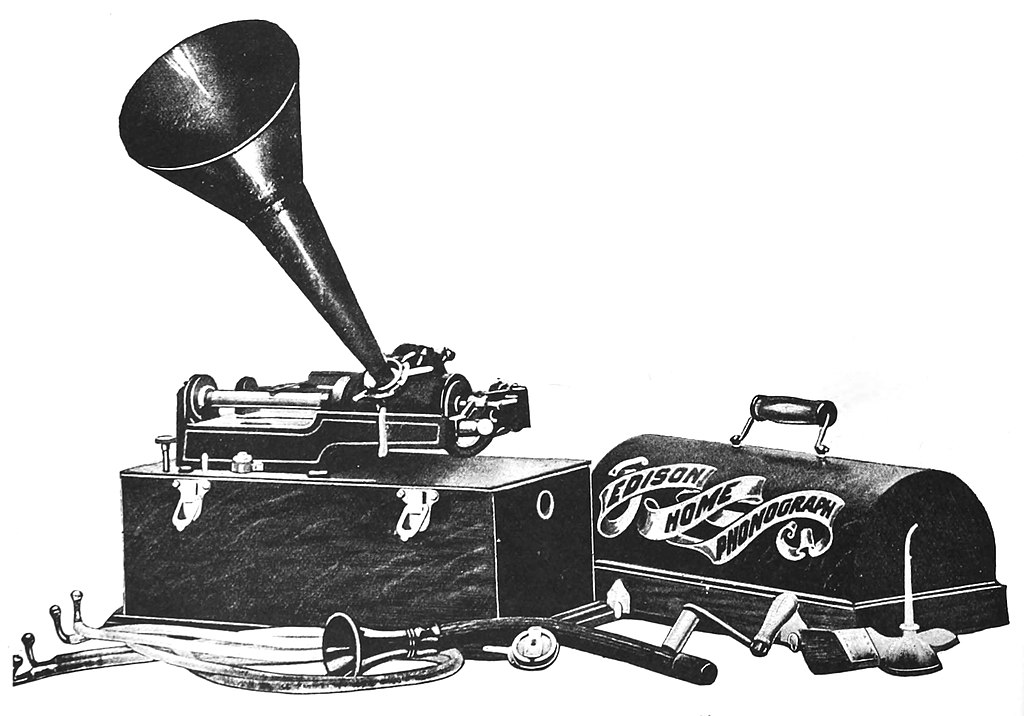In 1877, Thomas Edison and his assistants attached a needle to the diaphragm of a telephone receiver with the idea that the needle could be used to etch an impression of sound onto quickly moving paper, thus creating a recording or sound writing.
Edison understood that sound is the vibration of particles across a medium, such as air, in waves. He developed a way to imprint or record the waves so that they could be played back or turned back into sound using a second needle.
He eventually designed a device he called the phonograph that had a brass cylinder wrapped in tinfoil, which rotated and moved lengthwise when turned by a hand crank. On one side was a diaphragm, or very thin membrane, connected to a needle. When sound waves were forced into the receiving end, it caused the membrane to vibrate and the needle to etch a groove into the foil as the cylinder was being turned by the crank, thus recording sound. A second needle and an amplifier were on the other side. When the cylinder was set to the beginning and the needle placed in the grooves, the original sound was reproduced as the vibrations were amplified. (Read more)

To learn how Edison’s phonograph worked, click here.
During the early 1880s a contest developed between Thomas A. Edison and the Volta Laboratory team of Chichester A. Bell and Charles Sumner Tainter. The objective was to transform Edison’s 1877 tinfoil phonograph, or talking machine, into an instrument capable of taking its place alongside the typewriter as a business correspondence device. This involved not only building a better machine, but finding a substance to replace the foil as the recording medium. By the beginning of 1887 both sides had announced the invention of a machine using a wax cylinder that would be incised vertically to match the sound vibrations. The same machine that was used to make the recording would, as with the tinfoil machine, be used for playback. Edison, as he did earlier, termed his wax cylinder apparatus a phonograph; Bell and Tainter named their apparatus a graphophone. Business people preferred the former, but neither machine was much of a success. Since the phonograph did not succeed as a dictating device, Edison’s company began to market pre-recorded wax cylinders of popular music that could be played on the phonograph in the office or home or even on coin-in-slot machines in arcades, saloons, and elsewhere. By the early 1890s a rudimentary recording industry was underway. Meanwhile, Bell and Tainter made considerable improvements to their graphophone, and they, too, entered the entertainment field. Both sides had applied for a patent on the vertical cutting, or incising, of sound vibrations into a wax cylinder. Both sides made recordings with the result that a phonograph cylinder could be played on the graphophone and vice-versa. (Read more)

Meanwhile Emile Berliner in Washington, D.C., began to take a great interest in the future of sound recording and reproduction.
To read about Emile Berliner’s new invention, the gramophone, see next page.


